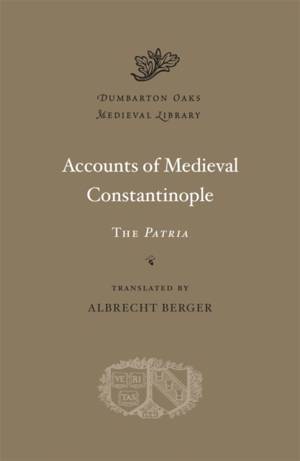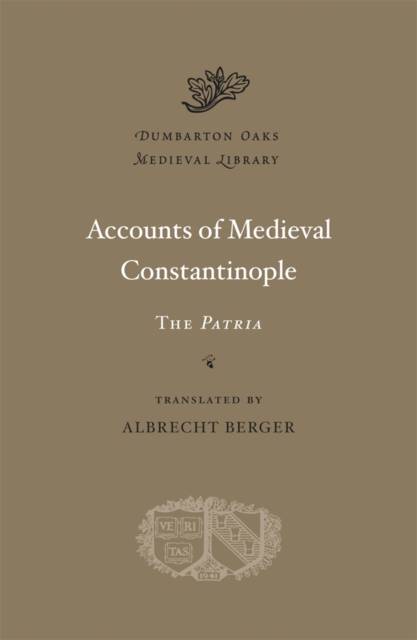
- Afhalen na 1 uur in een winkel met voorraad
- Gratis thuislevering in België vanaf € 30
- Ruim aanbod met 7 miljoen producten
- Afhalen na 1 uur in een winkel met voorraad
- Gratis thuislevering in België vanaf € 30
- Ruim aanbod met 7 miljoen producten
Zoeken
Accounts of Medieval Constantinople
The Patria
€ 45,95
+ 91 punten
Omschrijving
The Patria is a fascinating four-book collection of short historical notes, stories, and legends about the buildings and monuments of Constantinople, compiled in the late tenth century by an anonymous author who made ample use of older sources. It also describes the foundation and early (pre-Byzantine) history of the city, and includes the Narrative on the Construction of Hagia Sophia, a semi-legendary account of Emperor Justinian I's patronage of this extraordinary church (built between 532 and 537). The Patria constitutes a unique record of popular traditions about the city, especially its pagan statues, held by its medieval inhabitants. At the same time it is the only Medieval Greek text to present a panorama of the city as it existed in the middle Byzantine period. Despite its problems of historical reliability, the Patria is still one of our main guides for the urban history of medieval Constantinople. This translation makes the entire text of the Patria accessible in English for the first time.
Specificaties
Betrokkenen
- Vertaler(s):
- Uitgeverij:
Inhoud
- Aantal bladzijden:
- 384
- Taal:
- Engels
- Reeks:
- Reeksnummer:
- nr. 24
Eigenschappen
- Productcode (EAN):
- 9780674724815
- Verschijningsdatum:
- 1/11/2013
- Uitvoering:
- Hardcover
- Formaat:
- Genaaid
- Afmetingen:
- 134 mm x 223 mm
- Gewicht:
- 503 g

Alleen bij Standaard Boekhandel
+ 91 punten op je klantenkaart van Standaard Boekhandel
Beoordelingen
We publiceren alleen reviews die voldoen aan de voorwaarden voor reviews. Bekijk onze voorwaarden voor reviews.










